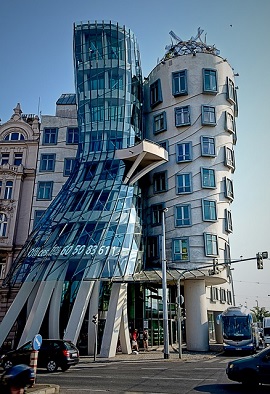Context
In its widest sense, the term 'context' refers to the circumstances or interrelated conditions that are relevant to something that exists or occurs.
In terms of the built environment, 'context' can refer to the conditions which surround a particular site or project, and to which it should relate and connect to in some way. The buildings and structures that make up the built environment do not exist in isolation but are conceived and designed in order to respond to, support and enhance their surroundings.
With the notion of context come connotations of the existing fabric, the locality, tradition and the vernacular. By embedding the intentions of a design within the essence of its surroundings, a connection linking new and old can be made, creating or maintaining a metaphysical 'place'.
The context of a building or site might include:
- The topography of the area.
- The site’s history and previous uses.
- Local culture.
- Architectural style.
- Local materials and construction techniques.
- Weather and microclimate.
- Political conditions.
- National and local policy.
- The state of the economy.
These factors can be analysed, adapted and adopted to make a proposed development 'fit' into its context. This can give meaning to different aspects of a project through reference to its wider surroundings.
Context is one the aspects of design that might be considered when a planning application is made. Planners may reject a planning application if they do not feel a proposed development fits within the local context.
Contextualism, or contextual architecture, is a principle of design in which a structure is designed in response to its specific urban and natural environment.
Urban Design Guidelines for Victoria, published by The State of Victoria Department of Environment, Land, Water and Planning in 2017, suggests that urban context refers to: ‘…the broader setting of an identified area. The context may include the physical surroundings of topography, movement patterns and infrastructure, built form and uses, the governance structures, and the cultural, social and economic environment. The urban context can include the community vision for the area, and preferred future character, form and function.’
It suggests that: 'Similar to a site analysis, context analysis provides a detailed description and examination of aspects of the wider area around a site, to determine how these aspects will effect and contribute to the design of a proposed building development or public space design. An urban context analysis informs the building development or public space design response.'
Conservation Principles, Guidance for the sustainable management of the historic environment in Northern Ireland, published by the Historic Environment Division in July 2021, defines context as: ‘Any relationship between a heritage asset and its setting, including other places and its past, relevant to the values of that heritage asset.’
[edit] Related articles on Designing Buildings
Featured articles and news
Infrastructure that connect the physical and digital domains.
Harnessing robotics and AI in challenging environments
The key to nuclear decommissioning and fusion engineering.
BSRIA announces Lisa Ashworth as new CEO
Tasked with furthering BSRIA’s impressive growth ambitions.
Public buildings get half a million energy efficiency boost
£557 million to switch to cleaner heating and save on energy.
CIOB launches pre-election manifesto
Outlining potential future policies for the next government.
Grenfell Tower Inquiry announcement
Phase 2 hearings come to a close and the final report due in September.
Progress from Parts L, F and O: A whitepaper, one year on.
A replicated study to understand the opinion of practitioners.
ECA announces new president 2024
Electrical engineer and business leader Stuart Smith.
A distinct type of countryside that should be celebrated.
Should Part O be extended to existing buildings?
EAC brands heatwave adaptation a missed opportunity.
Definition of Statutory in workplace and facilities management
Established by IWFM, BESA, CIBSE and BSRIA.
Tackling the transition from traditional heating systems
59% lack the necessary information and confidence to switch.
The general election and the construction industry
As PM, Rishi Sunak announces July 4 date for an election.
Eco apprenticeships continue help grow green workforce
A year after being recognised at the King's coronation.
Permitted development rights for agricultural buildings
The changes coming into effect as of May 21, 2024.






















